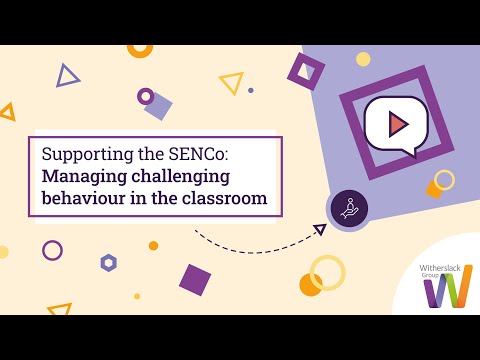Introduction:
Special Educational Needs Coordinators (SENCOs) play a crucial role in supporting students with special educational needs and disabilities (SEND). They face unique challenges when it comes to managing behavior and ensuring that these students are given the best opportunities to thrive within an inclusive environment. In this article, we will explore the challenges SENCOs face and some effective strategies they can use when managing behavior.
Challenges Faced by SENCOs:
1. Differing needs of students
Students with SEND have a wide range of individual needs depending on their diagnosis, making it challenging for SENCOs to address everyone’s requirements in a single approach.
2. Limited resources
Budget constraints and limited resources within schools can impact the support provided to students with SEND, making it difficult for SENCOs to effectively manage behavior with limited support staff or specialized equipment.
3. Inadequate teacher training
Teachers may not have received adequate training in managing behaviors of students with SEND, which places increased pressure on SENCOs as they provide guidance and support.
4. Balancing time and workload
With a large number of tasks to perform – including overseeing assessments, liaising with parents, providing additional support to teachers – SENCOs often struggle to find enough time to address every student’s behavioral needs.
Effective Strategies for Managing Behavior as a SENCO:
1. Focus on positive reinforcement
Encourage and reward good behavior by praising students when they behave appropriately or achieve a personal goal. Positive reinforcement helps build self-esteem and motivates students to continue making improvements.
2. Develop tailored behavior plans
Work closely with teachers and other staff members to develop personalized behavior plans for each student with SEND, ensuring that specific goals are set and strategies are put in place to address challenging behaviors.
3. Gain input from parents
Parents can provide invaluable insights into their child’s behavioral triggers and coping mechanisms. Engage them in conversations and encourage them to be active partners in the management process.
4. Encourage peer support
Peers can be a vital resource in managing behavior, as they are often more aware of the daily struggles a student with SEND may face. Promote a positive and inclusive classroom environment where students support and learn from each other.
5. Provide consistency
Consistency is essential for managing behavior, as it helps ensure that students with SEND understand their boundaries and expectations. Ensure that all staff members are consistent in applying strategies and interventions so that students receive the same support throughout their schooling experience.
6. Continuous professional development
Stay up-to-date with new methods, interventions, and techniques in managing the behaviors of students with SEND by attending workshops, seminars, or online courses. By staying informed, SENCOs can provide the best support possible to both staff and students.
Conclusion:
Managing behavior as a SENCO is undeniably challenging; however, implementing effective strategies can help create a supportive environment for students with SEND to grow and thrive. In focusing on positive reinforcement, developing tailored behavior plans, and involving parents in the process, SENCOs can effectively meet the diverse challenges faced by students with special educational needs and disabilities.











